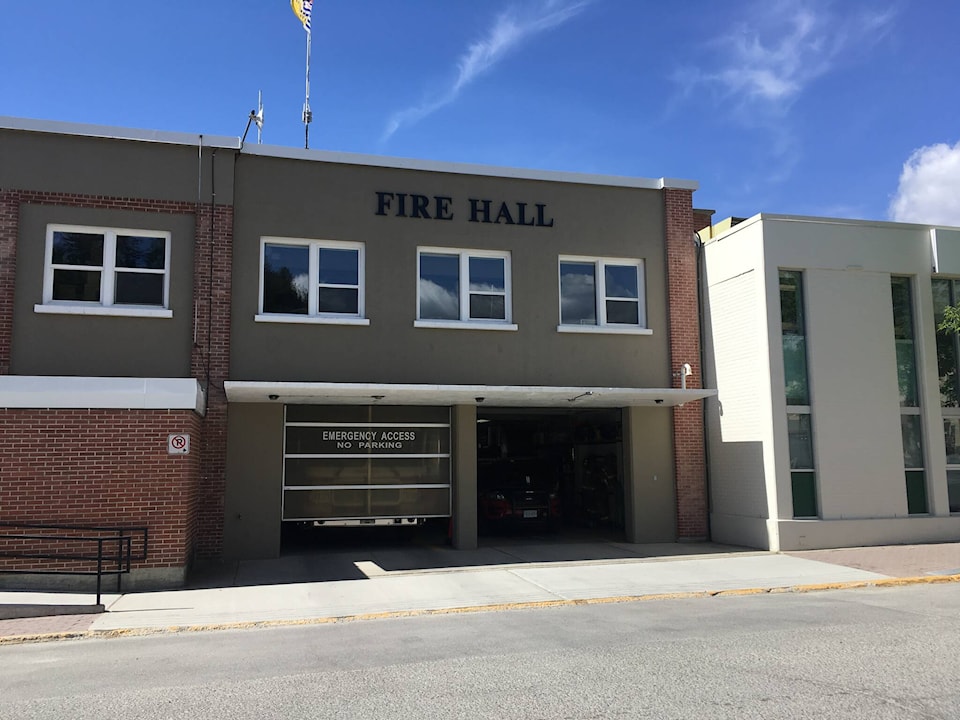The Kimberley Fire Department presented city council with a Fire Facilities Master Plan at the regular meeting of council on January 9, 2023.It is an ambitious plan that includes a new No. 1 station (currently housed in city hall; upgrades to the Marysville station; upgrades and potential moving of the training facility on Jim Ogilvie Way; and a new satellite station in Townsite.
City CAO Scott Sommerville told council that the plan would be included in future long term strategic planning, but obviously was not included in the current five year financial plan.
“There’s really no simple fix for some of these issues,” he said. “We’ll do our best to work this into our long range planning, but on the long end of long range.”
The issues are myriad and the solutions expensive.
Station 1 in city hall just doesn’t fit the needs of a modern fire department, the report says. It can’t accommodate newer fire trucks, which requires the purchase of specially designed engines which can run up to $250,000 more than a standard engine. Nor can the bays at Station 1 accommodate the ladder truck, which must be kept in Marysville. Given the distance to where a ladder truck would likely be required, it’s not ideal having the ladder truck so far away.
In addition, at Station 1 there is no separation from apparatus bays and administrative area, which exposes workers to operations contaminants.
The Marysville bays have no exhaust management, also exposing personnel to contamination.
The training facilities are not up to code; they’ve served their purpose and need to be replaced, the report says.
The following are the recommendations from the plan, along with their financial implications:
Station 1
The City should immediately begin planning to replace Fire Station 1 with a new facility capable of meeting the current and future needs of the fire department and community. The fire station should be moved out of the downtown core to better respond to fires in the community’s upper reaches and simplify deployment into the downtown core and other neighbourhoods.
Budget Implications: $12-14 million
The Marysville Fire Station Number 2 should be upgraded to include all necessary operational and administrative spaces. The new spaces need to be professionally designed and reflect the current understanding of fire station design to maintain firefighter health and safety. Administrative and public spaces (clean spaces) should be separated from operational or “dirty” areas. The operational bays of the fire station require a vehicle exhaust capture system to remove cancer-causing diesel exhaust fumes from operations and administrative spaces. Additional classroom and administrative spaces related to training should be considered for the fire station. Budget Implications: $1.2-1.6 million
The Kimberley Fire Department training facilities should be moved to City- owned property at the Marysville Fire Station as part of an overall modernization of the City of Kimberley’s fire facilities. All training props for the new facilities should comply with local and provincial building and other regulations.
Fuels for live fire training should be selected to ensure the least negative impact on firefighters, equipment and the environment.
Budget Implications: $800,000-$1.5 million Future Growth Recommendations:
The City of Kimberley should consider securing a property in the Townsite area of the City to house a satellite fire station that will serve the first response requirements of this development.
The Official Community Plan and other growth planning documents should include fire protection standards to ensure that new neighbourhoods are developed sustainably. Community design should consider fire department response times and reflect alternative measures, including fire sprinkler systems, emergency or alternate access points and construction material restrictions where they are located outside of existing fire protection response time standards.
